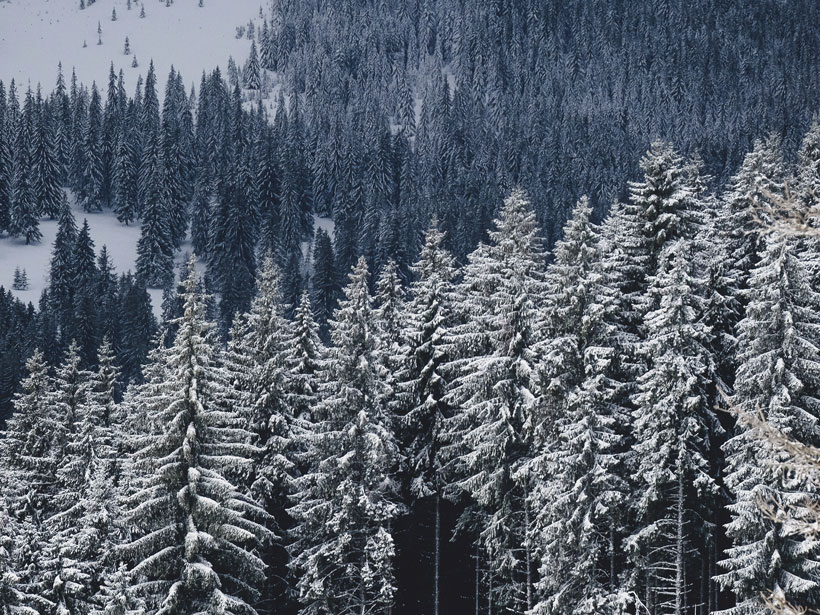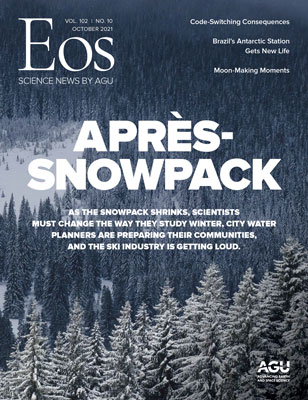When you think about snow, what comes to mind? Sledding and hot chocolate? Shoveling and wet boots? “As a native U.S. East Coaster, I never had much of an appreciation for the importance of snow—it was exciting as a kid and can be somewhat of a nuisance as an adult,” said Ellyn Enderlin of Boise State University and Eos’s Science Adviser representing AGU’s Cryosphere section.
“It’s really difficult to grasp the importance of snow when you’re focused on driving down slippery roads, but it’s important that society collectively realize that changes in snowpack have impacts beyond winter sports, days off from school, and difficulties commuting to work. The changes also profoundly influence the natural system, from microscopic to global scales.” Enderlin and Merritt Turetsky, our Biogeosciences Science Adviser, suggested the theme of our October issue and consulted on its development.
We start with Marta Moreno Ibáñez, who writes about the challenges of forecasting polar lows—the phenomenon that can result in sudden, dangerous conditions including strong winds and heavy snowfall. Until the dawn of the satellite era, not much at all was known about polar lows. Today scientists have a better handle on why they form but still have to work out the nuances of the many processes involved in warning people when to take shelter from one.
Then we take a look at The Changing Climate’s Snowball Effect on our planet. It used to be that city planners would know how much water to anticipate in their reservoirs by measuring the snowpack at the top of the mountain. These days, one measurement isn’t nearly enough to predict the runoff, leaving planners high and dry when all of the water anticipated doesn’t appear. Our reporting looks at the complex variables scientists and policymakers must start accounting for and how they work with communities who aren’t always ready for change.
Winter ski enthusiasts are coming to the realization that climate change is coming for the sport they love, and the reckoning may be an example for us all.
“Snowmelt is an incredibly important source of water in the western U.S., in terms of both human use and ecosystem services, but snowpack has decreased dramatically in the past several decades while the regional population has grown,” said Enderlin. “It seems as though people are finally becoming more aware of the importance of snow, yet little action has been done to reduce the greenhouse gas emissions that are driving changes in snowpack and the timing of its melt.”
Finally, read more about one industry that is gearing up for action. Winter ski enthusiasts are coming to the realization that climate change is coming for the sport they love, and the reckoning may be an example for us all. Just ask professional snowboarder Jeremy Jones, who founded Protect Our Winters, a nonprofit organization that recently led a campaign to oust the head of the International Ski Federation after he went on record as a climate change denier. In July, four of the biggest North American ski resorts signed on to a charter to enforce unity in climate advocacy and make real changes in their business operations—but they know they alone can’t save winter. This advanced lesson in how to bring equivocators on to the boat is one we could all learn from.
—Heather Goss (@heathermg), Editor in Chief
Citation:
Goss, H. (2021), Winter’s melting point, Eos, 102, https://doi.org/10.1029/2021EO163636. Published on 24 September 2021.
Text © 2021. AGU. CC BY-NC-ND 3.0
Except where otherwise noted, images are subject to copyright. Any reuse without express permission from the copyright owner is prohibited.


